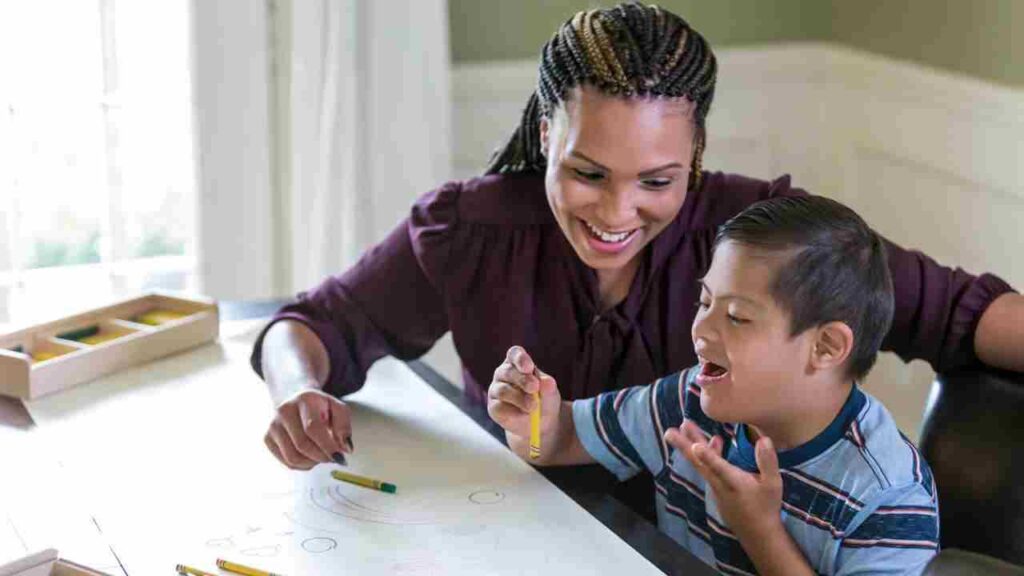Learning differences in children can pose unique challenges in their educational journey. These differences, also known as learning disabilities, encompass a range of conditions that affect how children acquire, process, and utilize information.
Understanding the causes, recognizing the symptoms, and providing appropriate treatment is crucial for supporting children with learning differences in reaching their full potential.
What are Learning Differences
Learning differences refer to neurodevelopmental conditions that hinder children’s ability to acquire academic skills at the same pace as their peers. These differences affect how children receive, process, interpret, and express information. While children with learning differences often possess average or above-average intelligence, they may struggle with specific areas of learning.
Common Learning Differences
- Dyslexia: Dyslexia primarily affects reading and language skills. Children with dyslexia may have difficulty recognizing and comprehending written words.
- Dyscalculia: Dyscalculia involves challenges with understanding and using mathematical concepts. Children with dyscalculia may struggle with number sense, calculations, and problem-solving in mathematics.
- Attention-Deficit/Hyperactivity Disorder (ADHD): ADHD is characterized by difficulties in sustaining attention, impulsive behavior, and hyperactivity. Children with ADHD may find it challenging to concentrate on tasks or follow instructions.
- Autism Spectrum Disorder (ASD): ASD affects social interaction, communication, and behavior. Children with ASD may have difficulties with social skills, repetitive behaviors, and sensory sensitivities.
- Auditory Processing Disorder (APD): APD affects how the brain processes auditory information. Children with APD may struggle to understand and interpret spoken language, leading to difficulties in following directions or conversations.
Read also: Academic Accommodations for Children with Learning Disabilities
Causes of Learning Differences
There are multiple causes for learning differences, including:
1. Genetic Factors
Genetic factors play a significant role in the development of learning differences. Certain genes contribute to the risk of specific learning disabilities, such as dyslexia and dyscalculia. However, having a genetic predisposition does not guarantee the presence of a learning difference. Environmental factors also interact with genetics to influence the manifestation of learning differences.
2. Brain Differences
Brain imaging studies have revealed structural and functional differences in the brains of individuals with learning differences. These differences may affect how the brain processes and organizes information, leading to challenges in specific learning areas.
3. Environmental Factors
Various environmental factors can contribute to the development of learning differences. These include prenatal exposure to toxins, complications during pregnancy or childbirth, low birth weight, exposure to lead or other neurotoxins, and a lack of early stimulation and language-rich environments.
Read also: Supporting Student Growth In Special Needs Classes
Recognizing Symptoms of Learning Differences
Early Signs
Recognizing the early signs of learning differences is crucial for early intervention and support. Common symptoms include:
- Difficulty with reading, writing, or spelling at an age-appropriate level.
- Challenges with understanding and using mathematical concepts.
- Inattention, impulsivity, or hyperactivity that impairs academic performance and social interactions.
- Delays in speech and language development.
- Difficulties with social interaction, communication, and understanding non-verbal cues.
Impact on Academic Performance
Learning differences can significantly impact a child’s academic performance. They may struggle to keep up with their peers, experience frustration or low self-esteem, and exhibit behavioral issues in response to academic challenges. Identifying these struggles is essential for providing appropriate support and accommodations.
Read also: Developmental Challenges in Children: Causes and Interventions
Treatment and Support
1. Individualized Education Plan (IEP)
An Individualized Education Plan (IEP) is a tailored educational program designed to meet the unique needs of a child with learning differences. The IEP outlines specific goals, accommodations, and support services that enable the child to access the curriculum effectively. It involves collaboration between parents, teachers, and other professionals to ensure that the child receives the necessary support and resources.
2. Specialized Instruction and Interventions
Children with learning differences may benefit from specialized instruction and interventions targeting their specific areas of difficulty. These may include:
- Orton-Gillingham Approach: This multisensory approach focuses on teaching reading, writing, and spelling through visual, auditory, and kinesthetic techniques.
- Behavioral Interventions: Behavior modification techniques can help address challenges related to attention, self-control, and organization.
- Assistive Technology: Various tools and devices, such as text-to-speech software, speech recognition software, and graphic organizers, can enhance learning and compensate for specific difficulties.
3. Accommodations and Classroom Support
Teachers can implement accommodations and provide classroom support to facilitate learning for children with learning differences. Examples of accommodations include extended time for assignments or tests, preferential seating, modified assignments, and the use of visual aids. Classroom support may involve additional instructional support, small-group or one-on-one instruction, and frequent progress monitoring.
4. Speech and Language Therapy
For children with learning differences impacting speech and language skills, speech and language therapy can be beneficial. Therapists work with children to improve communication, articulation, comprehension, and social interaction skills.
5. Occupational Therapy
Occupational therapy focuses on developing fine motor skills, visual perception, and sensory integration. It can help children with learning differences improve handwriting, coordination, and overall motor skills necessary for academic tasks.
6. Psychological Support
Children with learning differences may face emotional and psychological challenges due to academic struggles. Counseling and psychological support can help them build resilience, develop coping strategies, and address any associated anxiety, depression, or self-esteem issues.
Read also: Strategies For Successful Teaching Of Special Needs Students
(Frequently Asked Questions)
Can learning differences be outgrown?
Learning differences are lifelong conditions, but with appropriate support and interventions, children can develop strategies to overcome challenges and succeed academically.
Are learning differences a sign of low intelligence?
No, learning differences are not indicative of low intelligence. Children with learning differences often have average or above-average intelligence but may struggle in specific areas of learning.
Is there a cure for learning differences?
Learning differences do not have a cure, but with the right interventions, accommodations, and support, children can effectively manage their challenges and achieve success.
Can children with learning differences go to regular schools?
Yes, children with learning differences can attend regular schools. It is important to provide them with appropriate accommodations, support, and specialized instruction to ensure their educational needs are met.
How can parents support a child with learning differences?
Parents can support their children by advocating for their needs, communicating with teachers and professionals, providing a nurturing and understanding environment, and seeking appropriate interventions and resources.
Conclusion
Understanding learning differences in children is crucial for providing appropriate support and interventions. By recognizing the causes, identifying symptoms, and implementing effective treatments, we can empower children with learning differences to thrive academically and socially. Early intervention, individualized support, and a collaborative approach involving parents, educators, and professionals are key to unlocking the full potential of children with learning differences.







